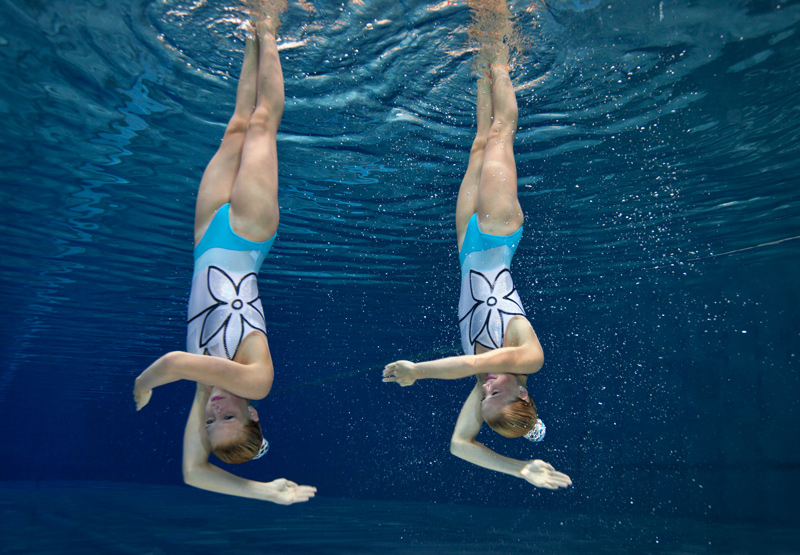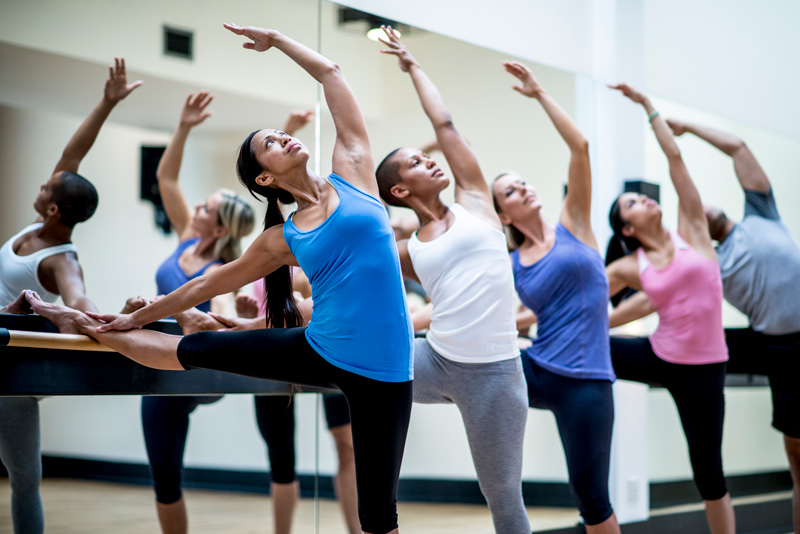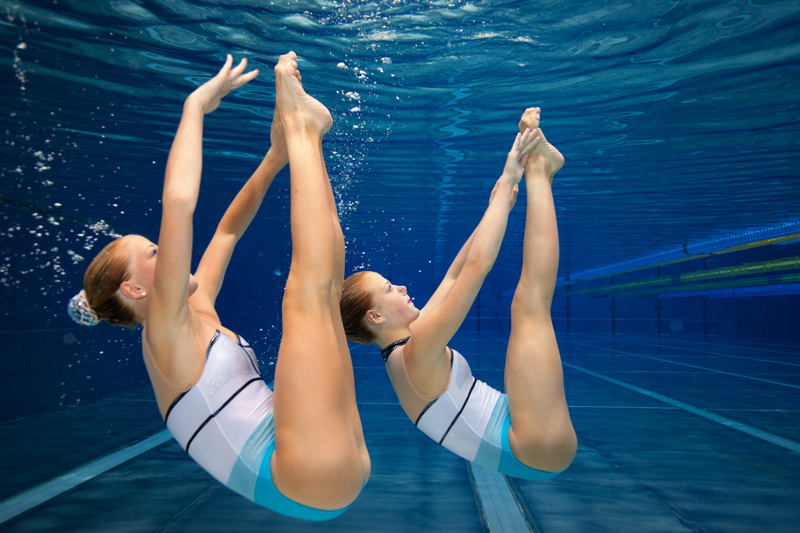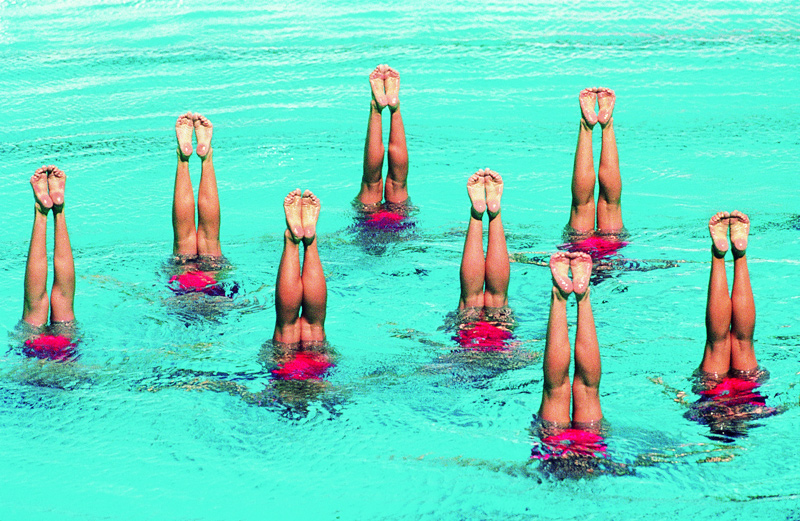Synchronized swimming, often referred to as underwater ballet, is not as easy as it looks. It’s an artistic sport that demands strength, flexibility, and grace. It was first recognized as an Olympic sport in the 1984 Olympics that was held in Los Angeles. Here are a few interesting facts and health benefits associated with the synchronized swimming.
Synchronized Swimmers Do Not Touch the Bottom of the Pool

Twists, pointed toes, lifts, and splits are just some of the moves that routines require. During a performance, while swimmers are completing gravity-defying moves, they are not touching the bottom of the pool. They practice and compete in at least 9 feet of water or deeper. They do all of this while lifting each other up as well.
Supreme Endurance

Synchronized swimmers spend six days per week practicing. Six hours are spent in the pool and two hours are on land cross-training. Pilates, weights, strength conditioning, ballet, gymnastics, and dance are all included in their workouts. This requires serious muscle strength and dedication.
Synchronized Swimming Works the Brain
Since this sport requires a routine to be memorized, the brain is working to remember and maintain it. When you keep your brain active, it creates new neural pathways and keeps the existing ones healthy. Just another benefit of this sport.
Increases Emotional and Psychological Health
Endorphins are created during physical activity. This sport calls for plenty of physical activity which results in a surplus of those “feel good” hormones. Synchronized swimming can be good for depression and overall mood.
It’s Supposed to Look Easy

Improved Cognitive Skills
Since multitasking is a necessity, synchronized swimming trains the swimmer to stay focused. They regularly exercise skills such as counting, rhythm, coordination, and visualization.
Prolonged Holding Breath

In a four-minute routine, most experienced synchronized swimmers can hold their breath for a minute or longer without coming up for air.
It’s all About Teamwork

Working together builds confidence. These swimmers must match each other in every single position. There are about one thousand movements between eight people. Every single detail matters regardless of how “small” the movement is.
Improved Cardiovascular System
Swimming improves the body’s use of oxygen without overworking the heart. This decreases the risk of coronary heart disease by 40%.
Increases Lung Capacity
Since swimmers spend hours in the water training, their lung capacity increases. Increased lung capacity helps bodies absorb and make better use of oxygen. This results in better overall health.

We offer a synchronized swimming camp this summer at our Manasquan, NJ location. Join us to reap the rewards of a better body and mind.
If you’re interested in swimming lessons and becoming a safer swimming, contact us! We have classes for all skill levels at five different locations throughout New Jersey.




